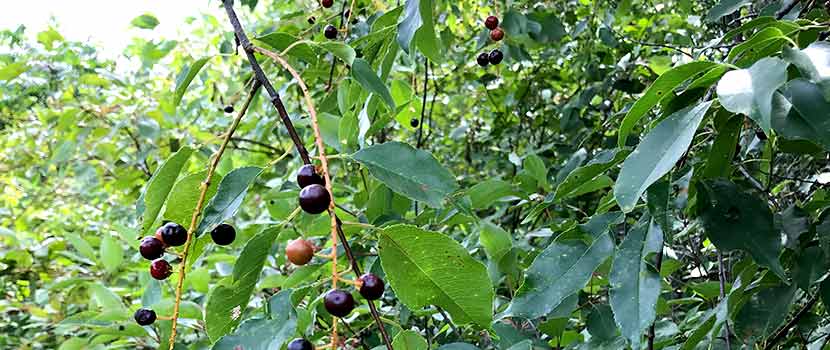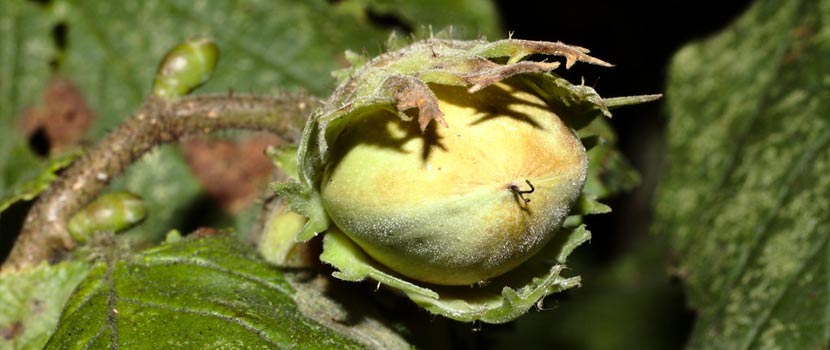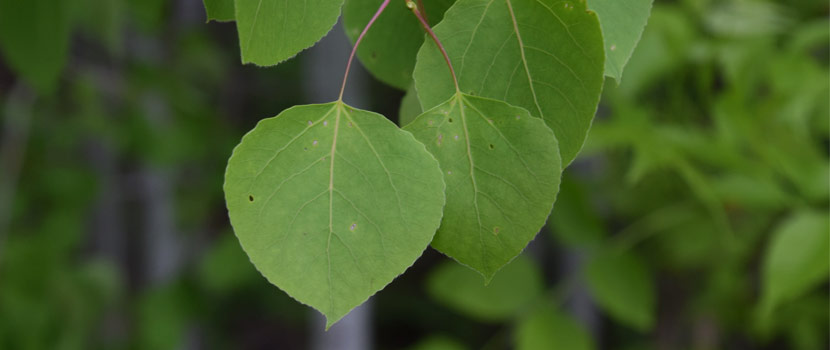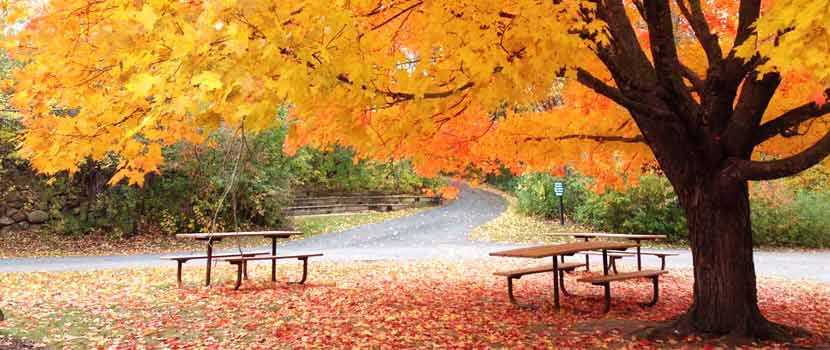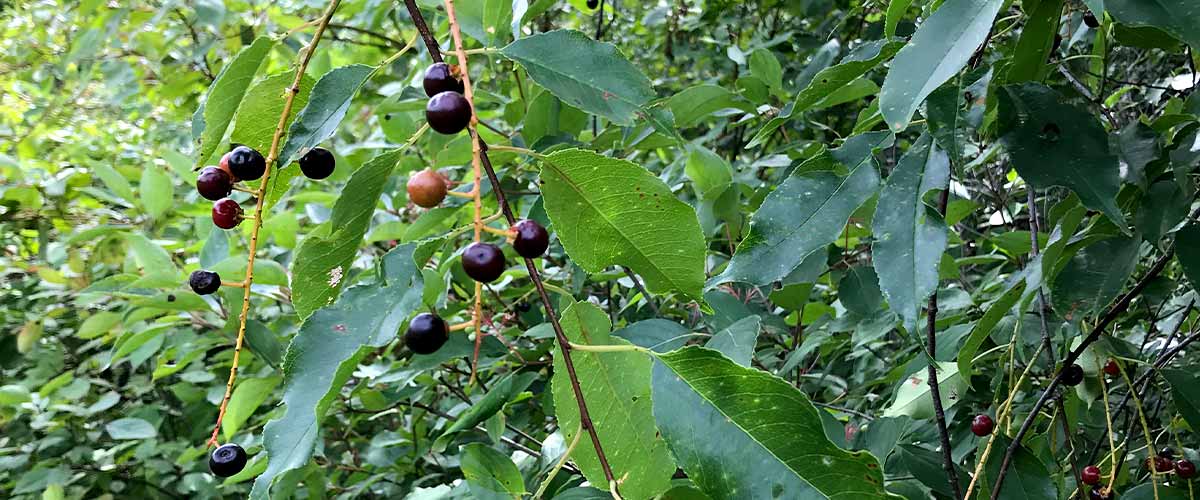
When people hear the term black cherry, a few things usually come to mind.
The first may be the popular fruit that is available in most grocery stores in late spring or early summer. The other could be beautiful furniture or cabinets. Finally, you might just think of money because of the widespread impression that cherry wood is so valuable.
All three of these ideas are essentially correct, but none of them capture the whole picture of this relatively common native tree.
Black Cherry — Commonly Uncommon
Black cherry is one of four native cherry species found in our region. The other three include American plum (Prunus americana), Pin cherry (Prunus pensylvanica), and Chokecherry (Prunus virginiana).
It is largest in stature of all four, easily the most well-known by name, and likely the easiest to identify in the field.
Black cherry is a dominant tree in only one forest-cover type in the United States — black cherry-maple forest, which occurs mainly in eastern Ohio, western Pennsylvania, western New York, and northern West Virginia.
In our region you can find individual specimens of this tree (or small stands) in many different forest types, as well as in a wide range of soil conditions.
However, you will most likely see this tree in oak-dominated forests, such as in Murphy-Hanrehan and Hyland Lake park reserves, due to the higher soil acidity found in those locations. We also have planted this tree in nearly every active use area in the Park District, just under 300 individuals in total.
What's in a Name?
There is nothing cryptic or mysterious about the naming of this tree. The genus Prunus translates, literally to “plum tree,” which is a reference to the type of fruit this tree produces.
The species, serotina, is derived from the Latin word “serus,” which means late. This refers to how late the flowers and fruit develop on this tree relative to other Prunus plants.
Similarly, all the common names refer to the fruit as well and include names such as: black cherry, wild cherry, rum cherry, mountain black cherry and wild black cherry. Pretty straightforward.
How to Identify Black Cherry Trees
Unlike many other trees, the bark is probably the easiest way to identify this tree in the wild. The older this tree gets, the more distinctive the bark becomes — turning more scaly and darker in color. These bark scales also tend to have upturned edges.
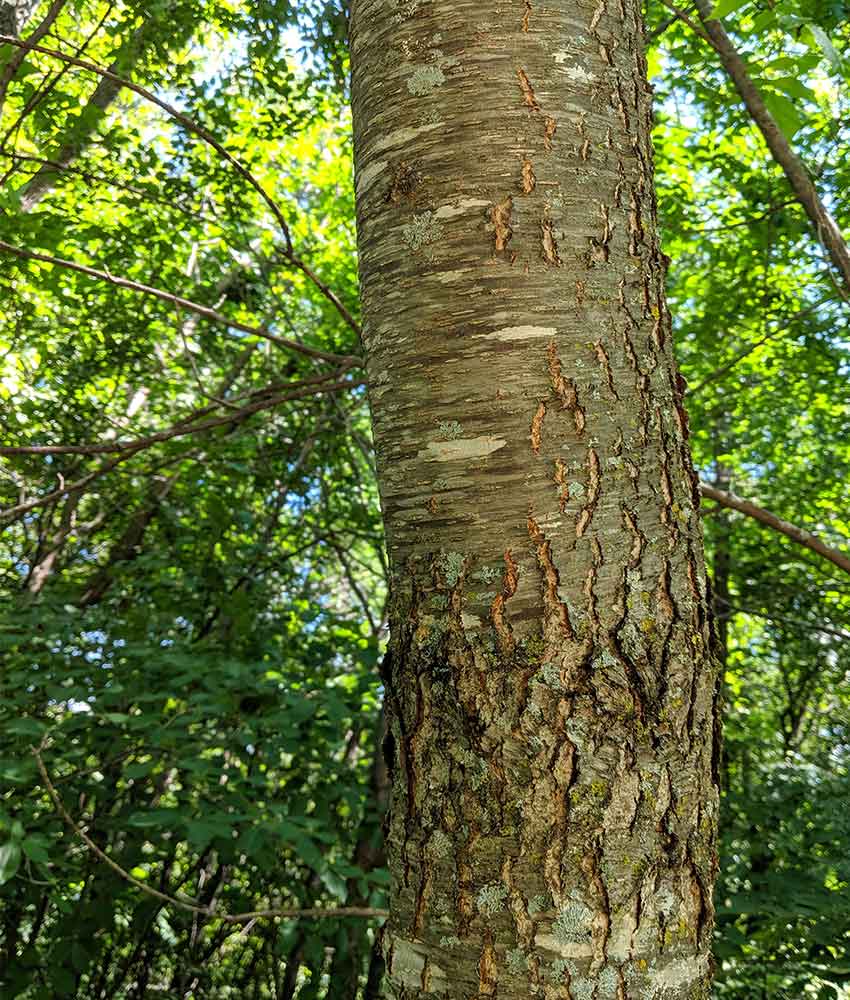
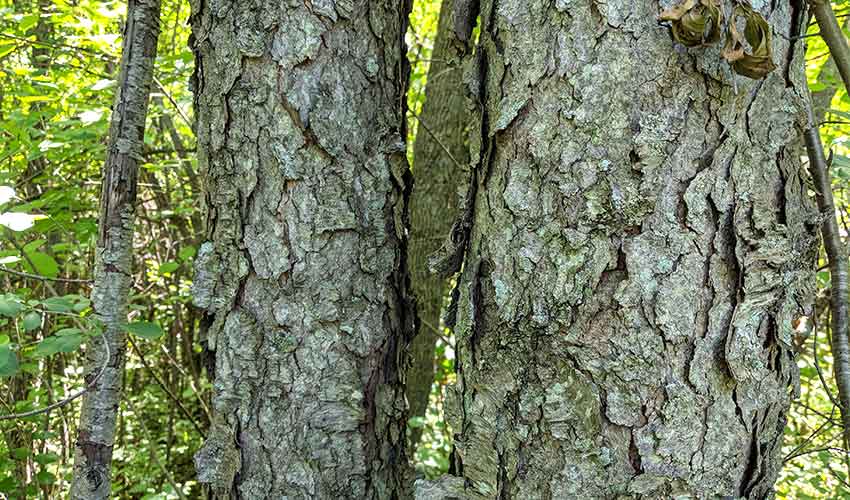
When younger, however, the bark is lighter gray and much smoother, with distinct horizontal lenticels (pores that facilitate gas exchange).
At this age, the bark could be confused with other cherry species and could also be confused with the non-native, invasive plant buckthorn.
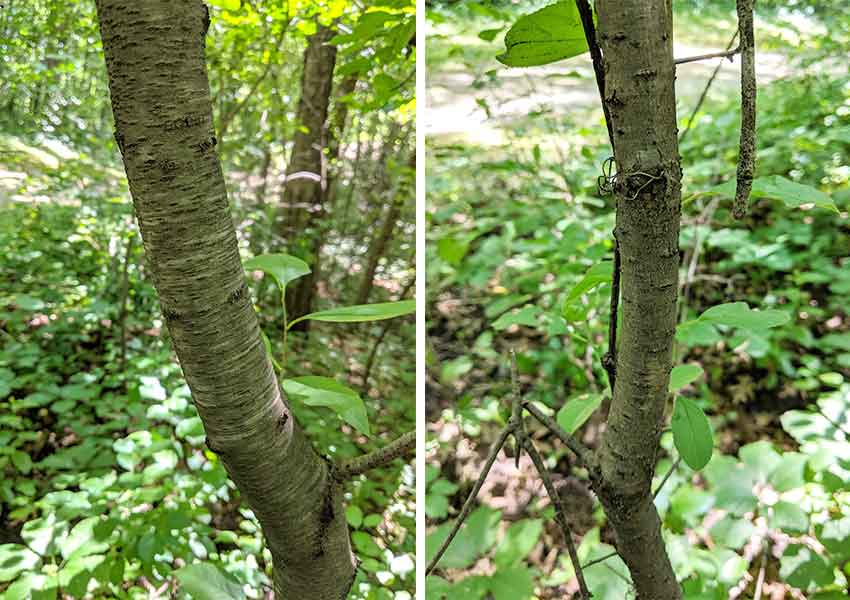
Leaves on black cherry trees are simple and oval shaped. They usually tend to have a shiny dark green appearance on top, though this characteristic can vary quite a bit.
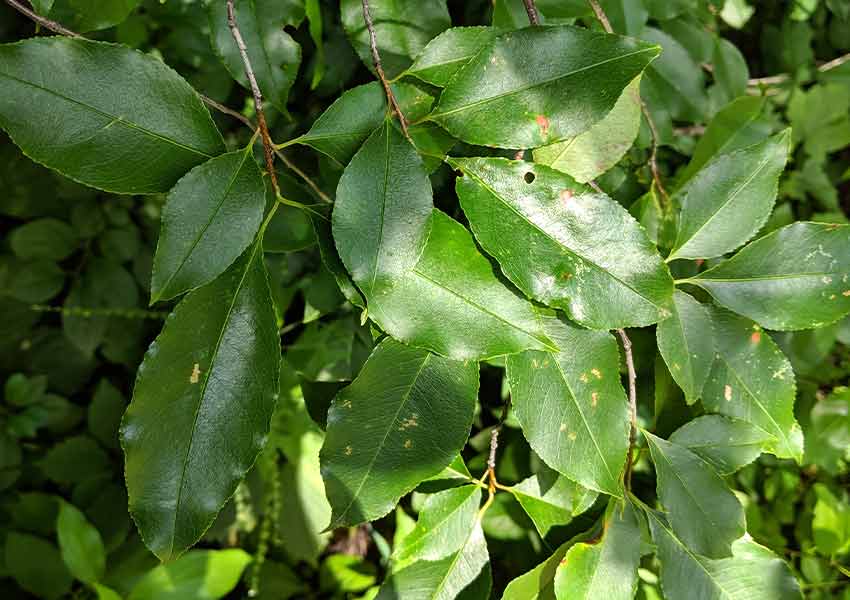
One unique characteristic of a black cherry leaf include the hairs on the underside of the leaf. Rusty colored hairs along the mid-vein at the base of the leaf are a good indication that it is a black cherry.
The fruit of a black cherry is distinctive and is a very dark red to almost black drupe (a drupe is a fleshy fruit with a single seed in the center). As mentioned previously, these usually ripen later in the year, typically late August through September.
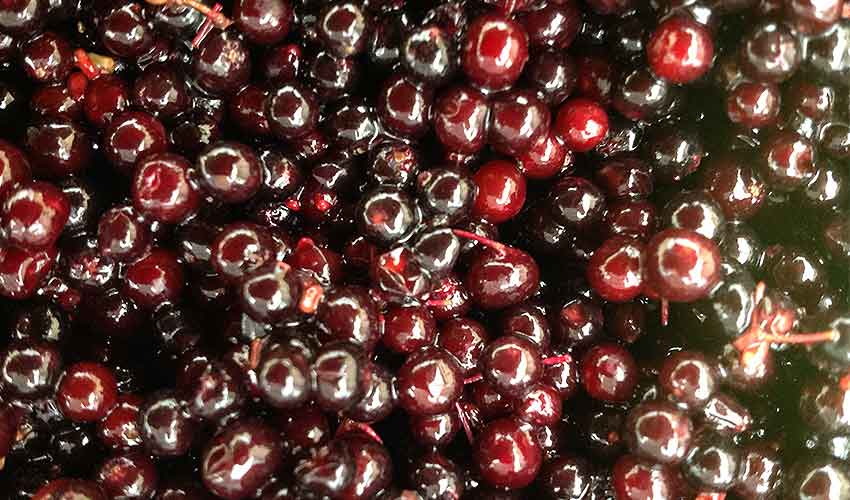
Propagation and Growing
If you are interested in growing this plant from seed (as we do here at the Park District), here are some tips from our Propagation Specialist Lois Larson:
Collect in August or September when flesh of seed is maroon-black. The flesh will be soft and when squeezed the seed can be seen.
Remove the outer pulp by rubbing across heavy screen or colander or kitchen sieve. Rinse off pulp until seed is clean.
Discard seeds that are blemished or have holes. They may be temporarily stored at 45-55 degrees. Prevent seed from dehydrating.
Black cherry seeds are best sown in fall. Plant the seeds about ¾-1 inch deep. Germination begins mid-May.
Managing Black Cherry
There are a few diseases and insects that affect this tree, but none of them are severe.
Black knot fungus (Apiosporina morbosa) is the most common pathogen seen on this tree around here. It is typically found on twigs, though trunk galls can also form. In almost all cases, this fungus causes only cosmetic damage, and rarely will kill the whole tree. Removing infected branches can help reduce the spread of this fungus on a given tree.
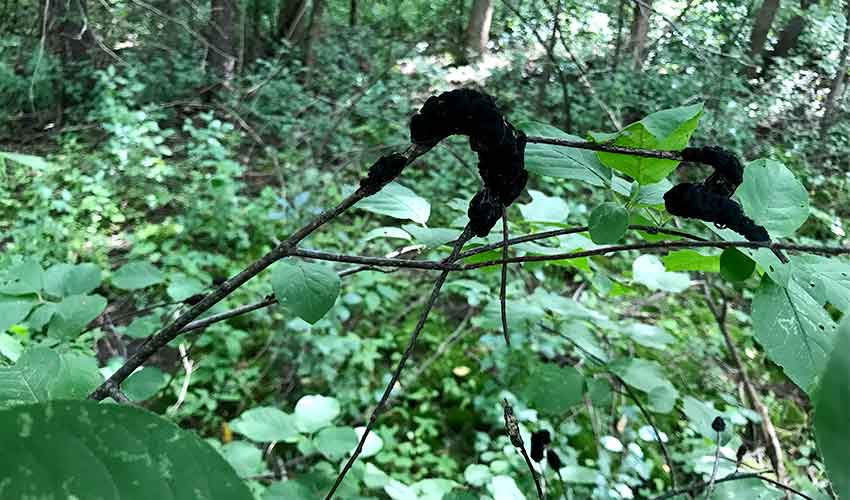
The other pest that you will frequently see on black cherry is eastern tent caterpillar. While these may severely defoliate the tree, the damage is almost always tolerable and nothing to be too concerned about. Only if several years of complete defoliation occurs will the tree become significantly stressed.
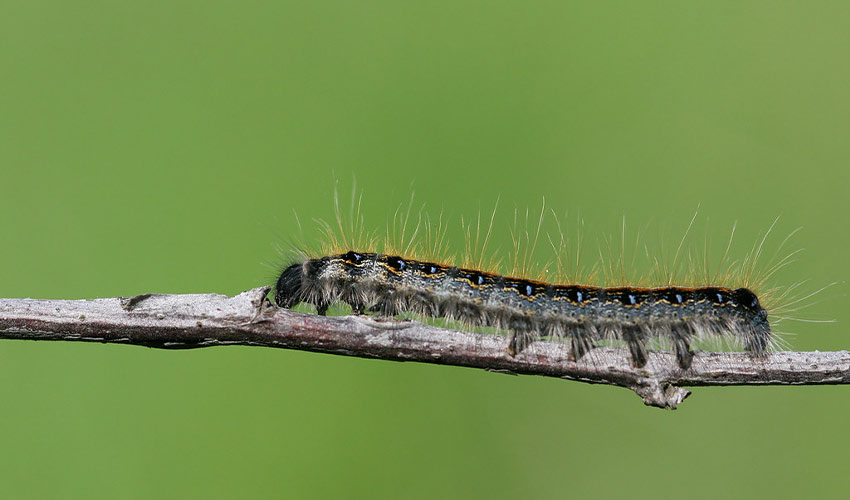
Uses of Black Cherry
Many people might associate black cherry with the fruit we buy at the grocery store. While black cherry fruit can be eaten, they are much smaller in size and are usually very bitter. They are, however, usable for jams and pies. (Just don’t chew on the leaves or twigs, as they can be poisonous).
The grocery store fruit, on the other hand, is much sweeter and is almost always a variety of either Prunus avium or Prunus cerasus, neither of which are native to the United States. Almost all sweet cherry production in the United States occurs in Washington, Oregon, and California. Sour cherry production occurs mainly in Michigan.
Black cherry is rarely used as a landscape tree, though it has characteristics that make it highly suitable for this. It is a fast-growing tree, growing two feet or more per year, and is adapted to grow under many different soil conditions. The only time it does not do well is when there is too much moisture, so make sure it has adequate drainage.
The most common use of black cherry is for lumber. The wood is in high demand for making cabinets, furniture, flooring, and other value-added wood products.
And while black cherry is one of the most valuable trees around (if not the most valuable), its true value is only realized when it is large, straight and without any significant defects. Typically, this means it has a minimum of 1-1/2 feet in diameter, no branches for at least eight feet (preferably 16), no metal (like nails, staples, or screws) and no disease or rot.
Unfortunately, in an urban/suburban setting such as ours, there is almost always one or more of these defects present, and any one of these can greatly reduce the value of that cherry tree you were thinking about harvesting. Sorry!
Climate Change Adaptation and Predictions for the Future
The effects of climate change on this tree within the state of Minnesota could be significant. Its overall importance with the forest community will likely decrease due to a number of factors.
Increased summer precipitation, increased insect pressure and rising average July high temperatures, are among the most likely contributors to its decrease, while its adaptability to varied growing conditions may help to offset some of these predicted changes.
Currently this tree is most commonly found in the southeastern third of the state. All projected climate change scenarios indicate that suitable future conditions will shift northward significantly, essentially entirely out of our region of the state.
What this means for the Park District is that the overall abundance of this tree will likely be reduced, and it will become less and less common within our forests. In the end, we may need to identify and begin promoting a suitable replacement tree for this vulnerable species or begin sourcing seed from more southerly sources.
About the Author

Paul is the Manager of Forestry and Horticulture at Three Rivers Park District – a position he has held for the past 10 years. Prior to that he was stomping around the wilds of Milwaukee County as the natural areas manager, and before that he was stomping around the wilds of New York City (yes, there are some) as an environmental restoration project manager for the New York City Department of Parks and Recreation. In his spare time he enjoys installing flashing on old windows.
Related Blog Posts
Species Spotlight: American Hazelnut
By: Paul Kortebein
American hazelnuts are easy to grow, cold-hardy, and offer many benefits to both humans and wildlife. Read on to learn all about this plant that grows throughout Minnesota.
Species Spotlight: Quaking Aspens
By: Paul Kortebein
You may know how quaking aspens got their name, but did you know that a quaking aspen is the largest living organism on earth? Read on to learn all about these common trees, including how to identify them and how a changing climate may impact them.
Species Spotlight: Sugar Maples
By: Paul Kortebein
Sugar maples are one of the most well-known native trees around the Twin Cities, but how much do you really know about them?
